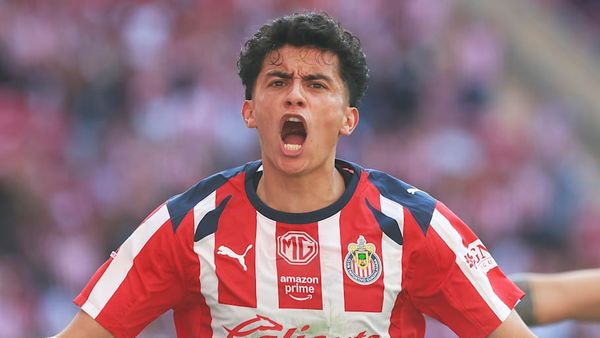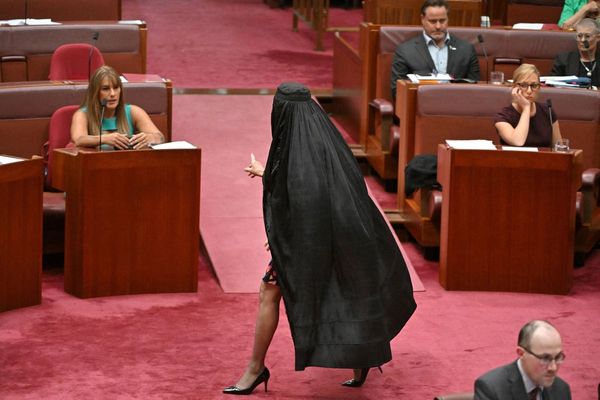Vladimir Putin has agreed to face-to-face talks with Volodymyr Zelenskyy to discuss a peace deal in Ukraine, according to Donald Trump and European leaders, although Moscow has not confirmed the meeting.
The potential breakthrough came after a day of tense diplomacy at the White House in which Trump ruled out a ceasefire while Zelenskyy and his allies pushed for US-backed security guarantees as part of any long-term agreement. The Ukrainian president said that following the talks security guarantees for Kyiv would be “formalised” within 10 days.
“At the conclusion of the meetings, I called President Putin, and began the arrangements for a meeting, at a location to be determined, between President Putin and President Zelenskyy,” Trump wrote on his Truth Social platform, adding that a trilateral meeting including the US president would follow.
British prime minister Keir Starmer and German chancellor Friedrich Merz appeared to confirm the meeting. Merz told reporters: “The American president spoke with the Russian president on the phone and agreed that there would be a meeting between the Russian president and the Ukrainian president within the next two weeks.”
But the chancellor cautioned: “We don’t know whether the Russian president will have the courage to attend such a summit. Therefore, persuasion is needed.”
Putin, for his part, said he was open to the “idea” of direct talks with Ukraine as he spoke by phone with Trump, according to Russia’s Tass news agency, but there was no confirmation that the meeting would take place.
Earlier, Zelenskyy said Ukraine was ready to meet with Russia in “any format” and that territorial issues would be discussed on a bilateral level with the Russian president.
Monday’s meeting came after Trump met Putin in Anchorage and said the onus would now be on Zelenskyy to agree to concessions that he said could end the war. Some commentators saw it as a damage limitation exercise after Trump was apparently swayed by Putin and began to echo his talking points.
Trump, who only last week warned Russia of “very severe consequences” if Putin failed to agree to a halt the fighting, made clear that he had reversed his position.
Welcoming Zelenskyy to the hastily assembled meeting at the Oval Office, Trump referred to other conflicts which he claimed to have ended, telling reporters: “I don’t think you’d need a ceasefire. If you look at the six deals that I settled this year, they were all at war – I didn’t do any ceasefires.”
He did, however, say the US would help guarantee Ukraine’s safety – something Kyiv has long said would be essential for a lasting peace. Trump said: “When it comes to security, there’s going to be a lot of help.” But the US president made it clear that European countries would be expected to carry the burden, adding: “They are a first line of defence because they’re there. But we’ll help them out.”
The Ukrainian president said his country has offered to buy $90bn worth of US weapons as part of the security guarantee, “which primarily includes aircraft, air defence systems”. “There indeed is a package with our proposals worth $90bn,” Zelenskyy said. “And we have agreements with the US president that when our export opens, they will buy Ukrainian drones. This is important for us.”
After meeting the leaders of Germany, Britain, France, Italy, Finland, the European Union and Nato, Trump wrote on his Truth Social platform that there had been discussion of security guarantees and “which guarantees would be provided by the European countries, with a coordination with the United States of America”.
French president Emmanuel Macron said the talks did not include Kyiv surrendering territory to Russia.
Trump’s initial conversation with Zelenskyy went more smoothly than their first encounter in the Oval Office six months ago, when the Ukrainian leader was ambushed and berated by Trump and Vice-President JD Vance.
This time, doubtless to the relief of European leaders, Zelenskyy gave Trump effusive thanks for the invitation and the pair even shared good-humoured banter while Vance remained silent.
Sitting with Starmer and other European leaders in the east room, Trump acknowledged: “All of us would obviously prefer an immediate ceasefire while we work on a lasting peace. Maybe something like that could happen. As of this moment, it’s not happening.”
But some of the European allies refused to accept defeat on the issue, mindful that the lack of ceasefire buys Putin more time to wage his war of aggression. On Monday, Ukraine said Russian attacks on major cities had killed at least 10 people, including a toddler and her 16-year-old brother in Kharkiv.
Merz insisted that “we would all like to see a ceasefire” and he could not imagine the next meeting taking place without one.
“Let’s work on that and let’s try to put pressure on Russia – because the credibility of these efforts we are undertaking today depend on at least a ceasefire from the beginning of the serious negotiations,” Merz said. Macron also backed the idea of a “truce” as a “necessity”.
Unmoved, Trump suggested that would be left to Zelenskyy and Putin: “Well, we’re going to let the president go over and talk to the president, and we’ll see how that works out.” He added: “And again I say it, in the six wars that I’ve settled, I haven’t had a ceasefire.”
The US president told his fellow leaders: “We also need to discuss the possible exchanges of territory, taking into consideration the current line of contact – that means the war zone.”
But he also said Putin had accepted there would be security guarantees for Ukraine as part of any peace deal.
Trump said: “In a very significant step, President Putin agreed that Russia would accept security guarantees for Ukraine and this is one of the key points that we need to consider and we’re going to be considering that at the table, also who will do what essentially.”
Several of the leaders emphasised the importance of the security guarantees to deter Russia from attacking again. Macron said: “The first one is clearly a credible Ukrainian army for the years and decades to come.” Europe was also clear about carrying its “fair share” of the burden, he said, “so you can count on this as we can continue.”
Giorgia Meloni, the prime minister of Italy, said: ‘We will talk about many important topics. The first one is security guarantees, how to be sure that it won’t happen again, which is the precondition of every kind of peace.”
Asked by a journalist if it would be the “end of the road” for US support for Ukraine if no deal is struck, Trump said it was “never the end of the road. People are being killed and we want to stop that.”
Trump added: “We’re going to make sure that if there’s peace, that peace is going to stay long-term … We’re not talking about a two-year peace and then we end up in this mess again.”
Zelenskyy outlined what he said his country needed to feel secure, which included a “strong Ukrainian army” through weapons sales and training. The second part, he said, would depend on the outcome of Monday’s talks and any guarantees European Union countries, Nato and the US would be able to offer to the war-torn country.
Trump declined to rule out sending US troops to Ukraine, noting it would be a discussion point with European leaders. Zelenskyy’s charm offensive included presenting a letter from his wife, Olena Zelenska, for Trump’s wife Melania, who over the weekend wrote to Putin urging him to consider children impacted by the war.
In stark contrast to the acrimony in February, there were also lighter moments. Brian Glenn, a pro-Trump TV reporter, told Zelenskyy that “you look fabulous in that suit”. Glenn had asked the Ukrainian leader about his clothing during his last visit to the Oval Office, implying that his casual dress was disrespectful.
Trump jumped in, saying: “I said the same thing.” Turning to Zelenskyy, Trump said: “That’s the one that attacked you last time.”
“I remember that,” Zelenskyy said, before addressing Glenn: “But you are in the same suit ... I changed, you have not.”







